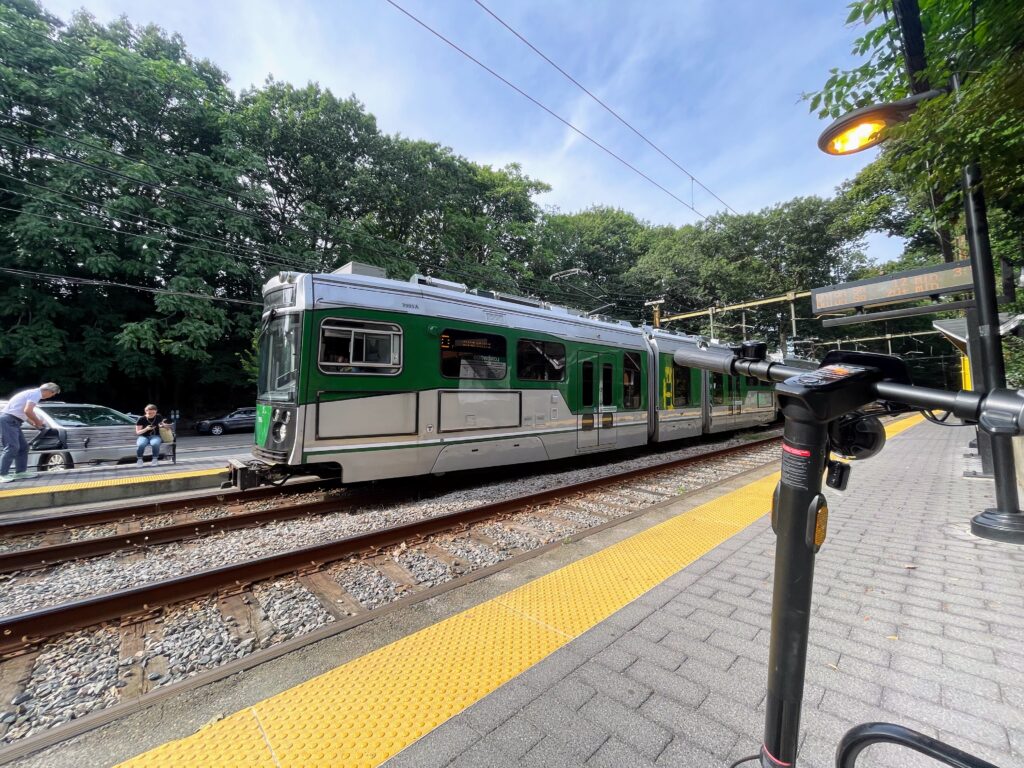Photo: Longwood Station, Brookline, 2023.
Recently I was asked if I have any opinions on the announcement that MBTA was shutting down the Green Line in order to fix the “slow zones”. I can think of at least three benefit, and a big negative.
Let me state the negative first. If the shutdown is too long – say, more than 3 months, then it likely will lost some riders for a long time. Based on research on habit-forming, it takes about 66 days to form a new habit. So if a rider decides to drive instead of taking the T during the shutdown, then he or she will likely continue to drive even after the shutdown is over. That is the bad news.
So, what is the good news?
First, the obvious. But fixing the slow zones, T will be faster. And we all like faster trains.
But there is more. By speeding up the T, there will be room for more trains on the track. So, it is possible to have more frequent trains once the slow zones are eliminated. And we all like more frequent trains.
And there is more. By fixing slow zones, each train ride will likely have more consistent speed. That is, it will not have to slow down and speed up frequently. That will make the train schedule less variable, more consistent and more predictable. And we all like things to be predicable, when it comes to minimizing waiting. Transportation researchers have shown that riders typically perceive waiting time 2-3 longer than it actually is. In other words, if a rider waited 10 minutes for a train, she would recall that the wait was more like 30 minutes. So minimizing waiting time is actually a big deal for managing public transportation.
In sum, fixing slow zones has multiple benefits beyond the obvious. But the key question still remains: How do we convince people to give T a try? That is an interesting topic for another post.
